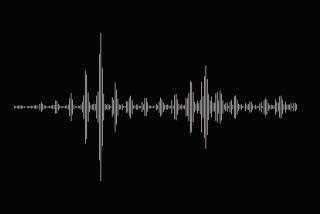The ABCs of Resuscitation for Parents : Emergency-Care Video Could Save Child
- Share via
SAN FRANCISCO — In a large number of emergencies involving children, knowing first aid and the basic ABCs of resuscitation gives parents a life-saving edge until medical help arrives.
Dr. Mark Schiffman, emergency room medical director at Children’s Hospital in Oakland, says parents and caretakers of children should especially learn the three steps of cardiopulmonary resuscitation, or CPR. Remembering the procedure, he said, is as easy as saying ABC -- Airway, Breathing, and Compression.
A. Open the airway if it’s blocked.
B. Begin mouth-to-mouth breathing if breathing has stopped.
C. Initiate chest compression if there is no pulse.
“The importance of on-the-scene emergency care cannot be overemphasized,” said Schiffman, who together with veteran paramedic-fireman Jeff Rusteen has produced a comprehensive video, “Until Help Arrives,” outlining and demonstrating the correct procedures.
CPR Emphasized Most
In the video, CPR is emphasized the most, Schiffman said, because many children can be saved through rescue breathing. Babies, particularly, he said, often stop breathing in an emergency and can be saved with just some ventilation.
The first thing to do is clear the airway by laying the child on his or her back (or cradling an infant in the arms) and tilting the head back while lifting the chin. Use a look, listen and feel method to determine if the child is breathing. If not, use mouth-to-mouth breathing so the chest rises and falls slightly.
Emergency help should be summoned by dialing 911 after a few breaths are given.
Next check for cardiac arrest by checking for a pulse. If there is no pulse, chest compressions should be applied by placing the heel of the hand over the middle of the breast bone and applying pressure thrusts smoothly at the rate of 100 times a minute.
If the victim has a pulse but is not breathing, resume mouth-to-mouth resuscitation at the rate of 20 breaths a minute, or once every three seconds.
Schiffman said he made the film because 100,000 children die or are permanently disabled in the United States annually, with nearly three-quarters of the deaths occurring among infants and youngsters under 6. There are 4 million births each year, he noted, with only a handful of emergency-care courses currently available to new parents.
More to Read
Sign up for Essential California
The most important California stories and recommendations in your inbox every morning.
You may occasionally receive promotional content from the Los Angeles Times.










